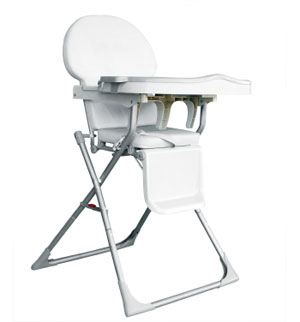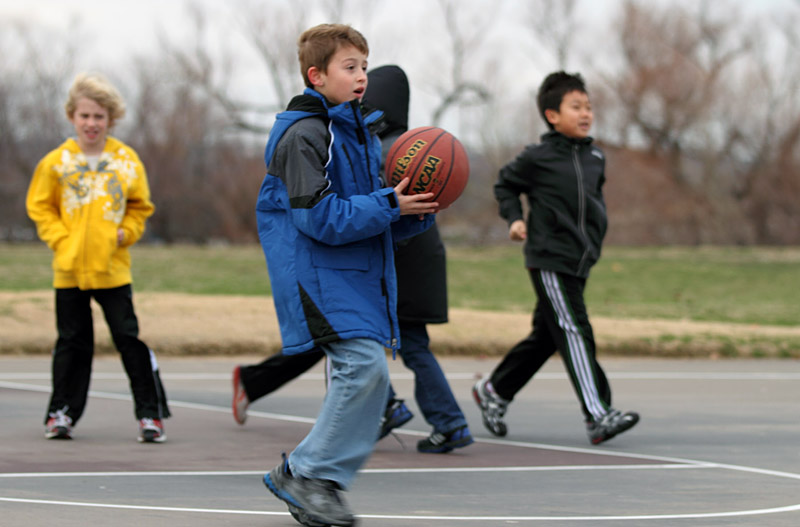
Each year, one in 10 babies around the world will be born prematurely and over a million of those will die. But could measuring the size of a baby’s feet help save lives?
In the final weeks of pregnancy, the idea of going into early labour might not seem like such a bad thing.
But giving birth prematurely – officially classed as before 37 weeks gestation – can lead to long-term health effects.
Depending on quite how early the baby is born, infants can either be completely unaffected or left with permanent disability and learning difficulties.
The issue of prematurity is particularly pronounced in South Asian and Sub-Saharan Africa, which accounts for over 80% of the deaths caused by pre-term birth complications.
In rural Tanzania, for example, about one in every 30 premature babies won’t make it past four weeks.
However, most of those lives could be saved with simple advice for mothers.
And that advice, says an international group of researchers, could start with just a footprint.
Foot chart with side rule
The larger foot on the yellow card represents a full term baby’s foot size. If a newborn’s feet are smaller than th
Sizing upe small foot on the card, the baby is probably premature and the advice is to take the baby to hospital immediately. Side rule added for scale.
Most mothers in high-income countries will give birth surrounded by medical equipment or with the support of a highly-skilled midwife.
This means that any problems, such as a low birth-weight or the mother’s waters breaking early, can be dealt with immediately.
In contrast, around 40% of women giving birth in low-income countries will do so without the help of a trained medical professional.
And due to inaccurate dating of pregnancy, many of those women will have no way of telling if their baby is too early or too small.
However, measuring the baby’s footprint could be used as a simple proxy for birth weight.
“There’s this grey area when the baby is between around 2.4kg (5lbs 5oz) and 2.1kg (4lbs 10oz) when the baby is more vulnerable to infection and other issues,” says Dr Joanna Schellenberg of the London School of Hygiene and Tropical Medicine.
“But when a baby is born at home, there is no way of weighing them,” she told the BBC.
The BBC’s Tulanana Bohela has been to see the project in action
To help solve the problem, Schellenberg and her colleagues at the Ifakara Health Institute in Tanzania have implemented a strategy called Mtunze Mtoto Mchanga – which means “protect the newborn baby”.
It includes using a picture of two footprints on a piece of laminated card and a local volunteer placing the baby’s foot against the images.
If the baby has feet smaller than the smallest foot, around 67mm, then the mother is advised to take the baby to hospital immediately. If it measures in between the big and the small image, then the mother is told about the extra care she needs to provide to increase the baby’s chances of survival.
Although the card is fairly accurate for five days after birth, it should be used it to identify small babies in their first two days of life, which is when they’re most at risk of dying without specialist care.
Mariam Ulaya is one of the volunteers at Namayakata shuleni village and visits the women before and after the birth.
“If I’ve measured the child’s footprint and seen that the child is smaller than usual, then I instruct them to carry the child skin-to-skin so that the child can share and feel the mother’s warmth,” says Ulaya.
“I also carry a small doll with me called Opendo. I use the doll to illustrate the proper way to breastfeed the child.”
‘It has helped my child to survive’
Such advice may seem simple but can really be the difference between life and death.
A report by the World Health Organization (WHO) says that of the 15 million premature births globally each year, more than 80% will occur between 32 and 37 weeks’ gestation.
Risks factors for premature birth
There is no clear cause of premature birth and there tend to be many different risk factors involved.
These include infections of the genital and urinary tract, pre-eclampsia, problems with the placenta and gestational diabetes.
Obesity is another major risk factor for premature birth.
Fetal fibronectin is a protein which can be used as a reliable indicator of preterm birth. It normally appears around 22 weeks and then again at the end of pregnancy. If it appears between these dates, early labour often follows.
Research also suggests that low levels of the hormone progesterone in the saliva could also help spot women at risk of sudden premature labour.
Most of these babies will survive if given extra warmth through skin-to-skin contact and very regular breastfeeding to help fight off infection.
In fact, the report states that an estimated 75% of deaths in preterm infants can be prevented in this way – without the cost and emotional upset of intensive care.
Salima Ahmad is 25 and has three children who live with her in Namahyakata dinduma village, Tanzania. Her youngest son, Alhaji, was born prematurely.
“I was a little bit shocked because many premature babies end up dying but I was also happy because I had a live baby,” says Salima.
Although Alhaji was born at the local hospital, Salima was given advice and support by volunteers from Mtunze Mtoto Mchanga about how to care for him once she got home.
“Carrying skin-to-skin was good but difficult in the beginning. But when the volunteer was visiting me and encouraging me, I could see myself managing it slowly. It is good, it has helped my child to survive,” she says.
Salima also feels that understanding more about premature birth helps mothers like herself to deal with it properly.
“It helps a lot for the mother not to be surprised when having a premature birth. It is useful to know in advance as you get good knowledge on how to handle the premature. Myself, I do thank the volunteer who talked about it when I was pregnant and she even taught me how to carry skin to skin.”
Source: BBC




 Every year, about 9,400 young children in the U.S. are injured falling off high chairs, a new study finds. Doctors warn that despite the chairs’ perceived safety, children in high chairs can be harmed if a chair is not used properly. The study also showed that the rate of such injuries increased by 22 percent over the study period, from 2003 through 2010. Head injuries were the most common type of injury associated with high chairs, followed by bumps or bruises and cuts, according to the study. The researchers looked at children ages 3 and younger who were treated in U.S. emergency departments, and the results are published today (Dec. 9) in the journal Clinical Pediatrics. “Maybe even more concerning, the rate of head injuries has increased by almost 90 percent between 2003 and 2010, and I think it begs the question, what’s going on?” said study researcher Dr. Gary Smith, director of the Center for Injury Research and Policy at Nationwide Children’s Hospital in Columbus, Ohio. Nearly all injuries associated with high chairs or booster seats involved falls. Most children fell as they were climbing or standing on the chair, suggesting that the chair’s safety restraint system was either not being used, or faulty, the researchers said. “We know that over the recent years, millions of chairs have been recalled in the U.S. because of not meeting safety standards. But usually, a very low percentage of recalled products are actually returned,” Smith told LiveScience. Parents should check the website of the federal government’s Consumer Product Safety Commission for product recalls, he said
Every year, about 9,400 young children in the U.S. are injured falling off high chairs, a new study finds. Doctors warn that despite the chairs’ perceived safety, children in high chairs can be harmed if a chair is not used properly. The study also showed that the rate of such injuries increased by 22 percent over the study period, from 2003 through 2010. Head injuries were the most common type of injury associated with high chairs, followed by bumps or bruises and cuts, according to the study. The researchers looked at children ages 3 and younger who were treated in U.S. emergency departments, and the results are published today (Dec. 9) in the journal Clinical Pediatrics. “Maybe even more concerning, the rate of head injuries has increased by almost 90 percent between 2003 and 2010, and I think it begs the question, what’s going on?” said study researcher Dr. Gary Smith, director of the Center for Injury Research and Policy at Nationwide Children’s Hospital in Columbus, Ohio. Nearly all injuries associated with high chairs or booster seats involved falls. Most children fell as they were climbing or standing on the chair, suggesting that the chair’s safety restraint system was either not being used, or faulty, the researchers said. “We know that over the recent years, millions of chairs have been recalled in the U.S. because of not meeting safety standards. But usually, a very low percentage of recalled products are actually returned,” Smith told LiveScience. Parents should check the website of the federal government’s Consumer Product Safety Commission for product recalls, he said Another reason for the increase seen in the study could be that more parents are taking their children to the hospital if a head injury occurs, Smith said. “There has been an increased awareness about the importance of minor head injury and concussion in the news. It is primarily related to sports, but it has also become on the radar for clinicians and parents,” Smith said. The researchers also compared injuries related to high chairs and booster seats with injuries associated with other types of chairs, including traditional chairs, and kids’ chairs. More than 40,000 injuries associated with chairs were reported each year during the study period, which translates to four children every hour. Children injured while using traditional chairs were more likely to sustain broken bones, cuts and bruises, compared with children who got hurt using high chairs, which have restraining systems. “I believe high chairs are safe, if they haven’t been recalled and if they are used properly,” Smith said. “Parents need to check the high chair they are using hasn’t been recalled. They also need be careful to use the restraining system, and use it every time.” Source: live science
Another reason for the increase seen in the study could be that more parents are taking their children to the hospital if a head injury occurs, Smith said. “There has been an increased awareness about the importance of minor head injury and concussion in the news. It is primarily related to sports, but it has also become on the radar for clinicians and parents,” Smith said. The researchers also compared injuries related to high chairs and booster seats with injuries associated with other types of chairs, including traditional chairs, and kids’ chairs. More than 40,000 injuries associated with chairs were reported each year during the study period, which translates to four children every hour. Children injured while using traditional chairs were more likely to sustain broken bones, cuts and bruises, compared with children who got hurt using high chairs, which have restraining systems. “I believe high chairs are safe, if they haven’t been recalled and if they are used properly,” Smith said. “Parents need to check the high chair they are using hasn’t been recalled. They also need be careful to use the restraining system, and use it every time.” Source: live science

 Noting that about one million deaf children in the country are in need of modern medical treatment like cochlear implantation, Union Environment Minister Jayanthi Natarajan today said a holistic effort by government, medical fraternity and others would help in propagating the technology for the benefit of such kids.
Noting that about one million deaf children in the country are in need of modern medical treatment like cochlear implantation, Union Environment Minister Jayanthi Natarajan today said a holistic effort by government, medical fraternity and others would help in propagating the technology for the benefit of such kids.
